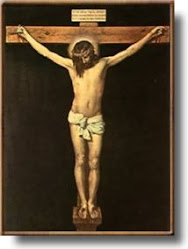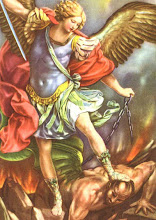Morton Smith and the Secret Mark Gospel Hoax
A review of Stephen CARLSON, The Gospel Hoax: Morton Smith's invention of Secret Mark, Texas: Baylor University Press (2005)
In 1958 an obscure US scholar named Morton Smith claimed that he had discovered an otherwise unknown letter by Clement of Alexandria in a volume at the monastery of Mar Saba, a few miles from Jerusalem. The letter to a certain Theodore referred to a previously unknown version of Mark's Gospel which, the letter said, the Alexandrian church kept in secret. It then quoted a section from it. The text suggested to most people that the Carpocratian heretics believed that Jesus was a sodomite, appealing to this Secret Mark in evidence; and that the text given of Secret Mark rather suggested that this was not an unreasonable inference.
The text of Theodore was written on the end-papers of a 17th century printed edition of the Letters of Ignatius of Antioch, edited by Isaac Voss and printed at Amsterdam. The script was an 18th century cursive hand, occupying some two and half pages. Smith was to publish some cropped monochrome photographs of these; some colour photographs were taken on a subsequent trip with other scholars; and then the manuscript disappeared.
It was not long before the authenticity of this text was disputed. Many people felt uneasy with the lack of a manuscript to subject to scientific tests, and dismissed the text on those grounds. Likewise the subject-matter was not one that many people felt very comfortable with. Smith's personal peculiarities did nothing to abate suspicions that so colourful a character would not be above forgery, in certain circumstances. But the subject has never gone away, and now receives its first book-length treatment, apart from those by Smith himself.
Stephen Carlson has investigated the text on three levels; (1) the manuscript itself, as seen from the photographs, (2) the content of Theodore and (3) the content of Secret Mark. All three, he believes, show that the text is not authentic, and was composed by Morton Smith himself. Interestingly he also believes that all three contain a signature confession by Morton Smith, indicating that the text was a hoax designed to be exposed after a suitable period, and not a forgery for money or reputation.
His chapters are stuffed full of data, and can be quite dense going. This is not a populist treatment, but one that explores every possible avenue in order to bring some objectivity to the subject. Not all of the arguments will convince everyone, but Carlson has clearly opened up many new areas for investigation, and placed the whole subject on a sounder footing.
The research carried out is very convincing. The only question is whether it is conclusive. One problem with all competent forgeries is that it is rarely possible to give them a 'killer blow' without some technological or scholarly advance unavailable at the time of composition. So any such can only be unmasked by an accumulation of inconsistencies and anachronisms. On the other hand such a compilation runs the risk of descending into fault-finding and debunking, which most of us have seen used by the unwary or unscrupulous merely as a means to dispose of inconvenient evidence in the interest of one theory or another. Carlson's book is not of this character. To evaluate his evidence, however, we need to consider the other side of the question, and ensure that at each stage all sides of the question are fairly explored.
Thankfully the book is entirely free of rancour. While the portrait of Smith that appears is unamiable, it is impossible to consider him merely a crank. Such a person could not have carried out the hoax.
Carlson begins by providing a review of scholarship on the subject so far. He then goes on to discuss the nature of literary fakes in a particularly useful manner. Most fakes are obvious once times change -- that which convinced the Victorians now looks evidently Victorian to us. But Carlson has carried this analysis a stage further, and found a way to reduce the subjective element. He notes that any fake must address an area which is controversial in its own time. If it does not, it will never come to notice.
This is obviously true: for example anyone may write fake letters on a subject no-one cares about, and, if the forgery is clever enough, get them published and accepted -- until times change. But how would this benefit the forger? A fake must be noticed to achieve its aim. Thus it must address an area of controversy at the time of composition; a text that addresses an issue which is highly controversial in the era in which it appears, but much less so in the era to which it supposedly belongs, is thereby marked as a possible forgery for contemporary advantage. Carlson's book is worthwhile for this insight alone, because it removes much of the subjective element from assessing the content of a text for forgery. It is one thing to feel, as some have done, that Secret Mark 'feels modern.' It is quite another to assess the degree to which it explicitly addresses issues specific to one period in history, and that not the 1st century AD.
1. Manuscript
Carlson has applied a number of objective tests to the script displayed in the photographs. In particular he uses material derived from the modern forensic science of handwriting analysis. Using various reference sources from this discipline, he shows that the script displays characteristics that in a modern text would be considered evidence of forgery. In particular he refers to the "forger's tremor." This is a blot of ink in the middle of a curve where it should not arise, if the line is being written naturally. It occurs because the forger is slowly drawing a copy of the image before him and pauses in the middle of a stroke to see where the line should go next. The pause allows ink to gather on the page. This is present in the letters in what is supposedly a rapidly written cursive script.
This is a strong argument indeed, and will convince many. However the argument needs further development to be final, at more length than Carlson's book permits, to exclude the possibility of a false positive here. Using material from a specialism other than one's own is always risky, since it may be that this can occur innocently. In order to investigate this, for instance, it would be useful to know whether there are other examples of 18th century Greek cursive which display this feature, but are nevertheless written, not drawn. Carlson addresses a number of possible problems in a careful way, but more needs to be done in this area before the argument can be considered conclusive. It is, however, a strong argument strongly made. It is doubtful that Smith was familiar with this science of handwriting verification, for instance.
Carlson has made other discoveries. He identifies the script as identical to another on part of a binding of another Saba ms (no. 22 in Smith's catalogue), described by Morton Smith as 20th century and written by an unknown "M. Madiotes." This is also a valuable discovery. But paleographers can differ, and it would be useful to hear whether others agree with this identification. The content of the fragment is not mentioned, which is surprising; the image printed was too small to be readable by me.
Likewise he has discovered that the script in Theodore is unlike that in a sample of other 18th century Saba Mss. I was unclear what the criterion for the selection of Saba manuscripts was; a larger group would be better. But tellingly, Carlson has found examples of Morton Smith's own Greek hand in marginalia in his own copies of various texts -- thus unlikely to be written for public inspection --, which are far closer to Theodore than Theodore is to the other Saba mss. It may or may not be relevant that Smith ordered his papers burned. This is all instructive. But for finality a larger sample of manuscripts from Saba, and from Smith, is needed. Do letter-forms like those of Smith exist in 18th century cursive anywhere? This would be harder to check, but such a check might well be fatal to the authenticity of Theodore.
Carlson has also discovered that no modern Greek surname 'Madiotes' exists, indicating that this name is a pseudo-name or nickname. Apparently it means 'swindler' or 'bald-headed man' -- and Smith was bald. This, Carlson feels, is deliberate, and one of the tell-tales marks left by Smith to show how clever he had been. It seems that Smith had that type of sense of humour. Carlson was right to raise the issue, but this sort of 'proof' is commonplace among cranks, and so will not convince many of the inauthenticity of Theodore: it smells too much of the arguments used by enthusiasts for (e.g.) numerology.
All the points added together raise some very serious questions about the manuscript itself. For finality the possibility of false positives needs to be investigated further -- although Carlson has made it a matter of drudgery rather than prophetic inspiration, which is a welcome advance all by itself. The material is not finally conclusive; but it leaves the defenders of Theodore with some very hard questions to answer. Many will ask how it comes about that this now lost manuscript has so many curious features, if it is genuine.
2. Theodore
Carlson accepts Andrew Criddle's (1995) arguments that Theodore is statistically too close to the mean of Clementine usage to be authentic. In particular letters are often distinct in language from more formally composed texts, yet Theodore is not. Carlson makes this point, and that Smith was a specialist in Clement's works, and possessed an index of his usage created in the 1930's. Here many of us will feel a faint unease; human beings are not computers, and do not observe statistical laws. Can this argument be falsified by comparisons of other texts? The data sample is rather small, after all.
The investigation then proceeds to show various anachronisms in Theodore. For instance Carlson highlights a problem with the reference to salt -- that it can be adulterated by adding an ingredient, and suggests this involves assuming free-flowing salt, a modern invention. He also highlights a lack of references to adulteration in antiquity. Finally he points out that this free-flowing salt was invented by the Morton salt company -- Morton salt is such a very high profile brand in the US, that this like finding a reference to a hula-hoop! -- and that a verse of the bible quoted with a passage missing contains a reference to a smith in the missing passage. This again he takes as a deliberate self-reference.
How convincing are these arguments? Carlson argues them well, and without obvious one-sidedness. On the other hand there is clearly the possibility of false positives, and not nearly the same exploration of the possible alternatives that there was in the manuscript chapter. More work is needed here. Still Carlson's arguments are suggestive, and it is anachronisms that tell against any forgery.
3. Secret Mark
Carlson then moved on to examine Secret Mark itself. Various points are made concerning the over-faithfulness to Mark, again usefully. A key phrase in the text is shown to have no parallel in any ancient text -- something only possible to discover in these days of computerisation and the TLG -- and to convey a very modern meaning.
But his principal argument is that the text is designed to convey to a modern reader something it would not have conveyed to an ancient reader -- that Jesus was, or might have been, a sodomite, and that his arrest in Gethsemane might have been for soliciting. The analysis of the text, pointing out what it would say in context in antiquity, is really very well done, and convincing. Ancient sodomy took place in a social context other than our own, and he shows the text speaks strongly to our generation, but not at all to theirs.
Likewise his documentation of the controversies of the 1950's concerning 'cottaging' and the legal record of these shows fairly convincingly that the manner in which the insinuation is made could only belong to the 1950's. Earlier than this the controversy was not active in the same manner; later than this and the influence of the gay rights movement on liberal America would mean a different bait would be needed to achieve the same impact. This dates the text to a specific period other than that to which it purports to belong. Apparently Smith would have been aware that such an insinuation would have been grossly offensive to Christians, and like so many atheists he loved to bait this group.
All these arguments are subjective to some extent, although much less so than is usually the case. But the detailed analysis does tend to suggest strongly that Secret Mark is designed for 1950's America. It has the keynote intention to address a contemporary controversy. This portion of Carlson's argument seems very strong, and is argued as objectively as possible. Indeed it is quite hard to summarise in a few words, and the reader is referred to the tightly argued text.
Finally Carlson shows that Smith had referred to all the issues raised by Secret Mark before he supposedly discovered it, and this, he argues, is again a confession. That Smith did indeed so write is shown: that he intended others to discover this and recognise a hoax is less clear.
The question with all of this, however, is whether a false positive would be possible. This is not explored in the book, unfortunately; but the nature of the argument means that such is always possible. But the reader inevitably is impressed by the cumulative effect of all these oddities in one text.
Conclusion
It is hard to detect a good forgery. The best of them go on for centuries. It is also very hard to produce an argument against a forgery which is not capable of producing false positives. The key argument is, and always was, anachronism: the mention of things which are inappropriate to a period. This argument Carlson has refined, in a manner that will be generally useful.
As a rule, when a forgery appears, it takes time before the evidence gradually builds against it. Only crude fakes can be unmasked by a single conclusive test soon after manufacture. Decades or centuries later a new scientific technique can show when an item such as the Shroud of Turin was made; its contemporaries had no such tools. Likewise the arguments deployed by Lorenzo Valla against the Donation of Constantine have not all stood the test of time, and could be evaded in various ways if one chose.
Has Carlson decisively disposed of Secret Mark? The answer must be no, for more work would need to be done to validate what he has discovered with a larger data sample and tie up some loose ends. But he has made it very difficult for anyone to accept that it is genuine. It is possible that other examples will be found that show that some genuine manuscripts may be written with the "forger's tremor." But what are the chances that Theodore should be one of them? It is possible that texts will be found which answer the other objections, at least occasionally. But how likely is it that Theodore should have so many problems? The defenders of Theodore can only rely on the limited data sample that it was possible for Carlson to use in the time available as a reason to mark his conclusions as provisional; and every day of any further investigation is likely to make that uncertainty smaller and smaller.
The Gospel Hoax opens up new avenues of investigation. Suddenly it is possible to move the investigation forward into new territories. But these territories may never be explored; for it seems entirely possible that this book will dispose of Secret Mark, without further work being done. Few will devote time to what nearly everyone considers a hoax.
Constructive feedback is welcomed to Roger Pearse.
Written 29th October 2005.
Revised 31st October 2005 to modify tone slightly.
http://www.tertullian.org/rpearse/reviews/carlson_gospel_hoax.htm
CHRISTIAN RELIGION ARTICLES
Iscriviti a:
Commenti sul post (Atom)



































1 commento:
Hi I just read your review and I wanted to alert you that a scholar has PROVEN that Carlson's methodology was fundamentally flawed to 'prove' the forgery hypothesis.
http://salainenevankelista.blogspot.com/2009/12/tremors-or-just-optical-illusion.html
As David Trobisch, the eminent expert on Biblical manuscripts notes, Hi Professor Hedrick
I am sorry to bother you. I sent Viklund's proof to our mutual friend David Trobisch notes "I read it right away but somehow forgot to let you know what I think. His arguments are absolutely clear and convincing. The "forgery" accusations only works with the low resolution photos. An excellent article."
Please go to the attached link and see how no one actually checked Carlson's methodology.
Posta un commento